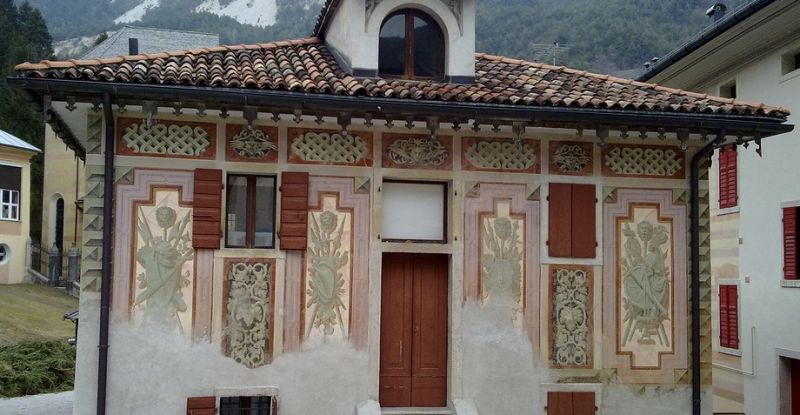Santo Stefano di Cadore
Santo Stefano, renowned as a centre for timber trading, had several mills and workshops until the end of the last century. The parish church was built in the 13th century: the choir dates from 1478, whereas the three naves were constructed between 1665 and 1675 to plans by fra’ Tomaso Simonetti from Ancona. The church hosts works by Tomaso Da Rin and Cristoforo Monforte, while one of the altars is by Brustolon’s pupils. The original settlement was in the hamlet Transacqua, where the first Christian chapel was erected, in the same spot where now stands the church of Our Lady of Graces and the nearby Casa Betting dating from 1600. In the village there are also two ancient chapels built with tuff, one of them holds an ancient statue of the Virgin Mary dating from the 15th century.
Travelling towards Comelico Superiore, the first hamlet on the way is Casada, where you can visit the little church (1855) dedicated to saints Lawrence and Oswald. Further along in Costalissoio there is the museum of the surrealist artist Luigi Regianini. The collection holds contemporary works by the painter and is enriched every year by new additions. Other notable works in the village are the statue “to the Homeland” by Augusto Murer and the church of the Holy Trinity (1853) with a painting by Zanzotto. He was the father of the poet Andrea Zanzotto and a freeman of the village. Travelling north you arrive in Campolongo with the church dedicated to Saints Philip and James. Although originally built in the 14th century, it was renovated in the 18th century; there are some notable paintings and a statue of Our Lady of Health made by Raffaele Piazza in the early 1900s. Val Frison is well-known for its wonderful natural environment, the remains of the blockhouses, and St Oswald’s chapel, rebuilt at the end of the 1920s.
INFO
www.valcomelicodolomiti.it
tourist office 0435.67021 / 0435.62230


